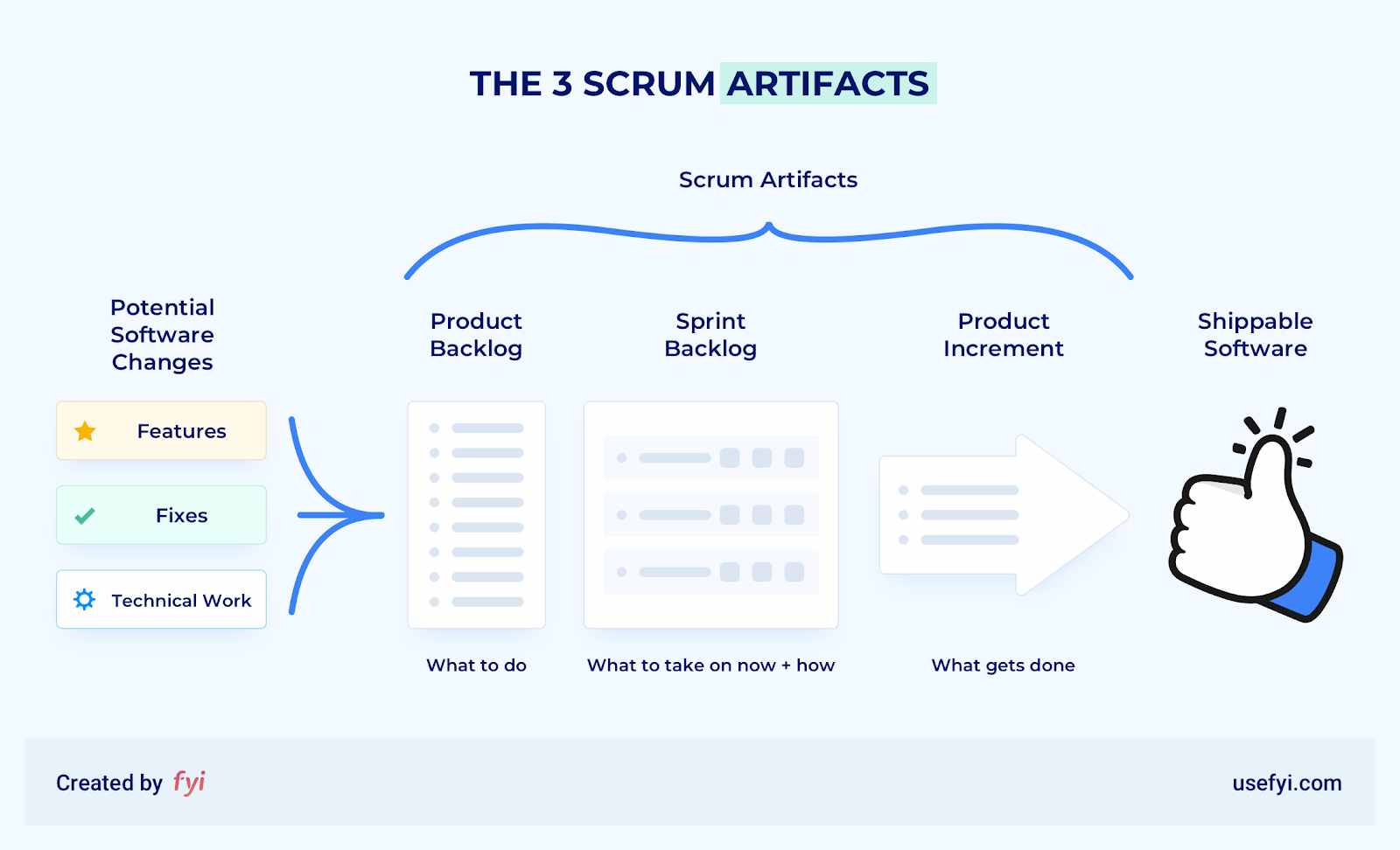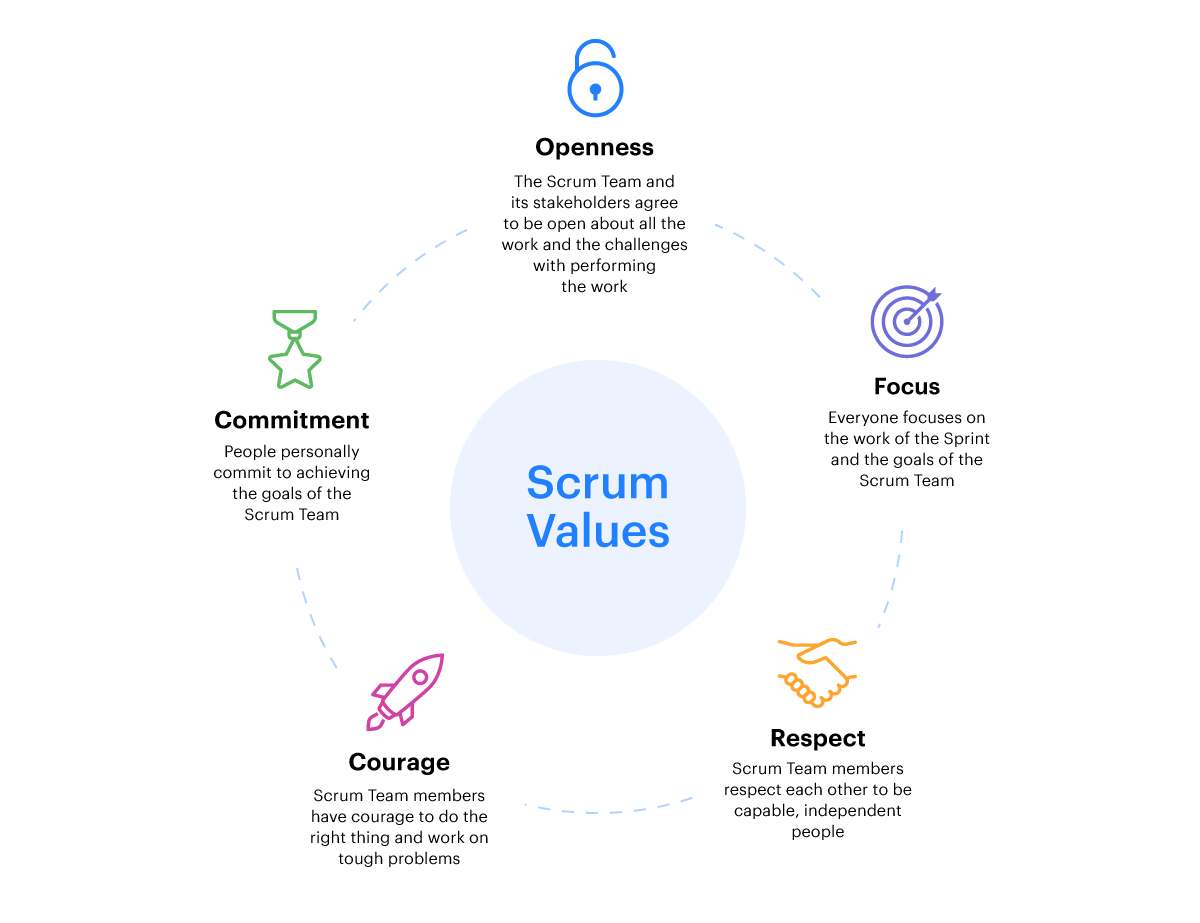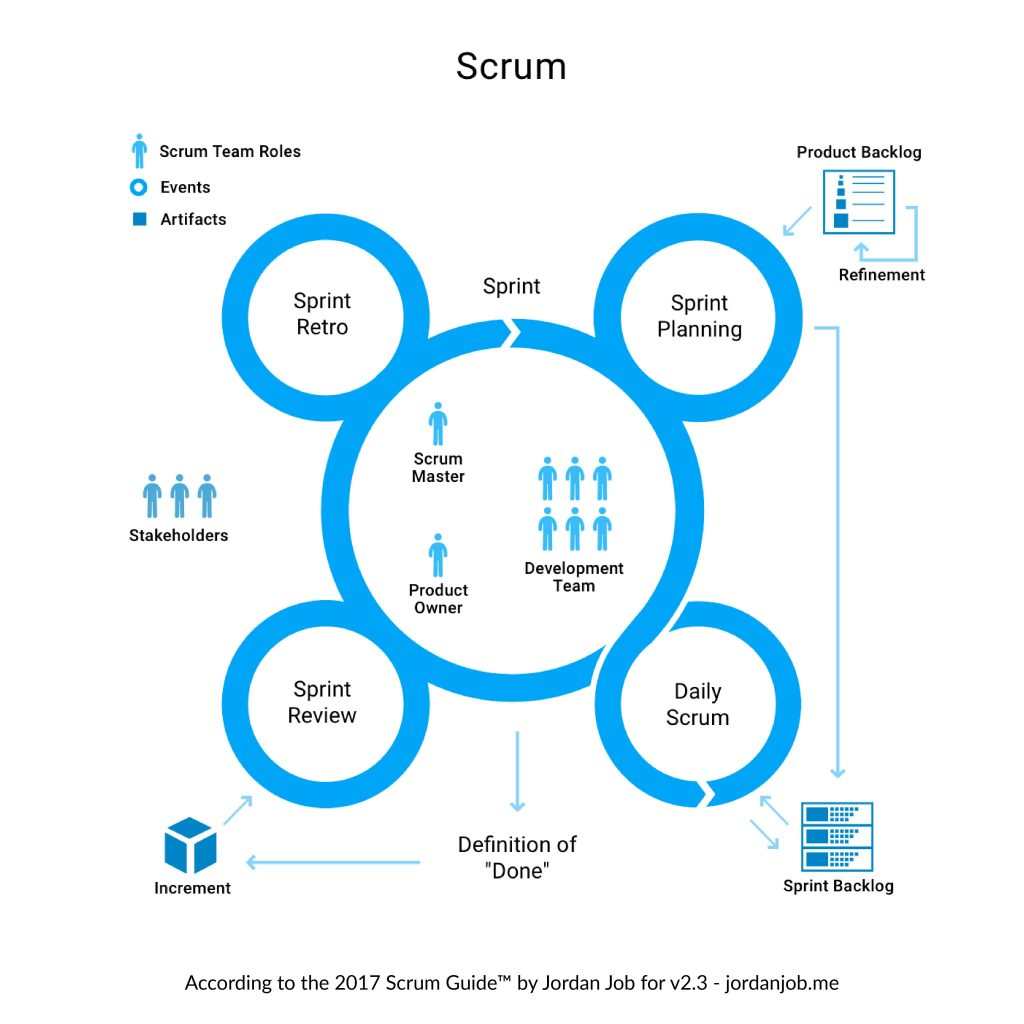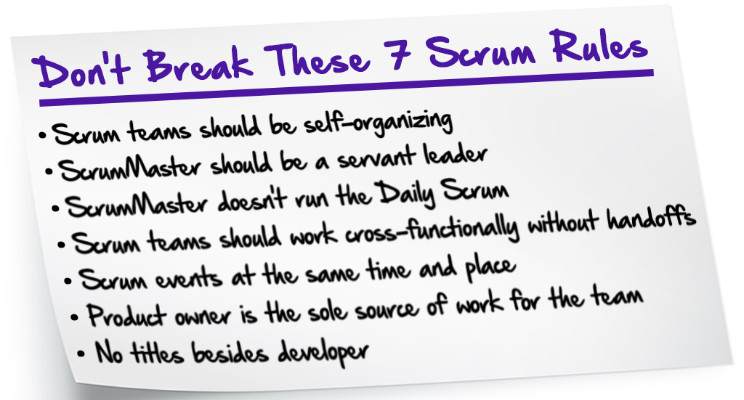A Guide to Learning the Scrum Framework With Scrum Certification
If you have followed the trends in the job market, you must have noticed the significant rise in the number of certified Scrum professionals. This popular Agile framework has taken both IT and non-IT industries by storm. But what makes Scrum certification a valuable credential on your resume? How can the Scrum framework add value to an organization? How effective is a Scrum certification course in instilling the Scrum mindset in professionals?
Here is a quick Scrum guide to understanding the Scrum framework and its importance, and how Scrum certification can help you gain an in-depth understanding.
Scrum Overview - What Is a Scrum Framework?
Commonly used in IT ecosystems, Scrum is one of the most popular Agile frameworks that has helped organizations achieve their goals and targets. It is a combination of tools, techniques, meetings, feedback cycles, and roles that when put together streamline a team’s work process. It helps organizations break down their projects into smaller tasks and give due importance to each one of them, rather than encouraging an unhealthy focus on the ceremonious end delivery of the product. It is the most suitable when a project demands the collaboration of cross-functional teams and there is a great deal of work and planning involved.
The Scrum framework embraces the fact that the team needs to execute the parts well to make a functional whole. When used right, a Scrum framework enables a team to visualize how plans may work, to try them out, to reflect on the results, and to make changes, if required.
Scrum framework is not a methodology; rather it is an empirical process that enables the Scrum team to discover and learn by themselves. It focuses on helping people become competent enough to deal with uncertainties and complex problems.
.png)
Source: Medium
A Scrum framework consists of the following:
1) Sprint
A sprint is a time period that spans from two weeks to a month during which the team creates a releasable or shippable product. Its fixed-length is to maintain consistency and sprints always move from the highest value requirements to the lowest. They come in succession; a new sprint begins immediately after one sprint is complete. An ideal sprint is short to keep complexities and risks at bay. Shorter sprints increase the number of learning cycles while restricting the risks to a smaller time limit.
A sprint consists of the following:
- Sprint Planning
The Scrum manager organizes a sprint planning meeting before every sprint to map out the objectives of the upcoming sprint. It occurs in two parts: The first part is all about deciding which product backlog item makes it to the sprint, and the second part is when the team members collaborate to decide how they can achieve their sprint goals.
- Daily Scrum
The daily Scrum is a 15-minute meeting, the purpose of which is to analyze the progress and address roadblocks. A Scrum team can choose its preferred meeting techniques as long as the meeting is aimed at the sprint goals and creates actionable tasks. It is supposed to be at the same time every day.
- Sprint Review
A sprint review is to oversee the sprint’s progress and outcome. The team presents the results to the stakeholders so that it can reach a consensus regarding future adaptations.
- Sprint Retrospective
A sprint retrospective is the Scrum event that takes place after a sprint review and precedes the next sprint planning. It is usually one hour long and helps the Scrum team identify areas that need improvement. It then uses these insights to plan the next sprint.
2) Scrum Artifacts
- Product Backlog
A product backlog is an organized list of what needs improvement in a product. It is also the source of all the work Scrum undertakes.

Source: Usefyi
- Sprint Backlog
The Scrum team members make the sprint backlog during the sprint planning meeting. It is a collection of user stories for use during iterations.
- Sprint Burn-down Chart
A Sprint burn-down chart is a graphic representation of the status of a sprint and shows the percentage of items completed in a single sprint.
Scrum Values and Principles
A Scrum team must adhere to a group of values (focus, courage, respect, commitment, and openness) that will encourage them to become valuable assets to their team as well as to their organization.
Scrum is an advanced framework used to tackle adaptive issues that arise during the development of complex products. It is no wonder that the enablers of the framework need to stick to the following principles to ensure a smooth journey from initiation to product delivery.
1) Adaptation
A Scrum team needs to continually evaluate their tasks and must make changes whenever and wherever necessary. Every member of the team has to be flexible enough to adapt to changes in the working environment as well as individual responsibilities.
2) Inspection
The Scrum framework involves hypothesizing and visualizing tasks before executing them, and of course, rigorous feedback cycles and evaluation to ensure the quality of the end product. The daily Scrum meetings and sprint review meetings are some of the techniques used for regular evaluation.
3) Transparency
Transparency is the most important Scrum principle. Every team member needs to know the status of tasks, issues, and developments. The absence of transparency can stand in the way of the team’s ability to sustain sophisticated products.

Source: Kissflow
4) Empiricism
Empiricism is a theory that asserts that knowledge comes from experience and observation. Agile work environments thrive in empiricism; there is no room for prejudices or assumptions. It is the lynchpin that holds the team together and helps it to have active control of the development process. A Scrum team works and learns from the work; that is, in a Scrum team, events, experiences, evidence, and facts are the basis of all the activities.
5) Self-organization
A Scrum team requires a hefty amount of self-organization to define, debate, and challenge their goals. A team that wants to adhere to the Scrum framework will need to work closely with the Scrum master to step outside of their comfort zones and fully commit to the framework. A Scrum team never holds back when it comes to redefining their roles and responsibilities for building a high-value product.
What Makes Scrum an Important Framework?
In product development, the development cycles can sometimes encounter uncertainties in resource allotment, cost optimization, change in the requirements of customers, and so on. These when coupled with the tough competition in the market can aggravate the challenges a development team faces. Designed to help team members, the Scrum framework also helps the team to easily adapt to changing requirements and uncertainties. It saves time and significantly reduces operational costs in Agile work environments.
What Is a Scrum Team?
A Scrum team is the building block of a Scrum framework. It consists of a product owner, a developer, and a Scrum master who are united by a desire to achieve product goals. They are highly skilled, self-organized, and self-managing. The Scrum team has neither any hierarchy nor any sub-teams; they are independently capable of deciding who does what and can even redefine roles and responsibilities as and when required.

Source: Product Tribe
A Scrum team should be small enough for easy communication and large enough to meet sprint requirements. If the team is too large, break it down into smaller cohesive teams. While doing so, the Scrum Master should ensure that all the teams share the same product goal, product owner, and backlog.
The team takes care of all product-related activities: research and development, experimentation, operation, maintenance, verification, collaboration with stakeholders, and so on. It maintains consistency, has regular sprint meetings, and reviews the timeline, and doesn’t let the product goal expand.
What Are the Benefits of Using a Scrum Framework?
Here are the benefits of using the Scrum framework in product development:
1) The Scrum Framework Helps Build High-Quality Products
Developing a quality product requires great discipline, constant experimentation, observation, and evaluation. The Scrum framework is for building sophisticated products while effectively tackling the challenges.
Scrum uses the following practices to ensure quality:
- The team regularly tests the product; there are rigorous feedback cycles so that the development team can tackle the issues as and when they arise.
- There are regular sprint reviews with stakeholders for continuous improvement of outcomes.
- The team defines the customer’s requirements on time so that product features are at the disposal of the entire team.
- The “definition of done” is what the status of tasks is.
- Sprint meetings must be regular.
2) Scrum Facilitates Faster Delivery of Product
With the right implementation of the Scrum framework, a Scrum team can deliver a product faster than traditional methodologies. This is due to the following reasons:
- Unlike waterfall work environments that take months to initiate development processes, Agile environments get to the initiation phase quickly. The product owner in the Scrum framework is responsible for defining the product requirements and giving them out to the Scrum team members early in the initiation stage.
- The team separates tasks based on their priority; the highest value requirements come before the lowest value requirements.
- At the end of each sprint, the Scrum team produces a service increment that is shippable.
3) Scrum Practices Ensure Increased Return on Investment (ROI)
Since there is faster delivery of value to the product, the time getting to market, in turn, decreases. This paves the way for a higher return on investment.
The following are the Scrum practices that facilitate a higher return on investment in an organization:
- There are consistent feedback cycles involving customers and stakeholders that enable the team to consistently rectify mistakes and address concerns.
- Unlike waterfall projects, Scrum projects fail early in the development process, reducing the cost of failure.
- Automation guarantees fewer defects; regular testing reduces waste.
4) The Scrum Framework Promotes Collaboration and Ownership
The Scrum framework is best suited for complex projects that demand cross-functional collaboration. A Scrum team member’s quintessential quality is his or her ability to cooperate and collaborate with other team members and to take ownership of individual tasks.
The following Scrum practices ensure collaboration and ownership in a Scrum team:
- A Scrum team thrives on the intensive collaboration of the Scrum master, the product owner, and the developer.
- The team must organize sprint planning meetings without fail. The Scrum master must always encourage the development team to work with the available business priorities.
- Daily Scrum meetings are for the development team to discuss roadblocks and analyze completed work.
- Sprint reviews occur when the product owner discusses priorities, and the development team gets to update the stakeholders.
- All decisions are strictly consensus; Scrum team members need to be on the same page.
- The workspace is a co-located environment that allows instant communication between all team members.
- Sprint retrospectives help the Scrum team to review finished tasks.
5) The Scrum Team Has Control over the Project
The Scrum framework ensures the Scrum team does not stray from its objectives. The following practices ensure control of the project:
- Adjusting priorities at each sprint makes room for improvement and helps the team accommodate changes easily.
- Accommodating changes helps the team to react positively to outside factors like market demand.
- Daily Scrum meetings allow the team members to address issues as and when they arise.
- Instant face-to-face conversations prevent loss of information and remove roadblocks.
- There are regular updates to backlogs that promote accurate representation of sprint progress and transparency.
- Sprint reviews are transparent; the stakeholders get to see the progress product and give necessary feedback to product owners.
- Sprint retrospectives enhance product quality and improve team performance by helping them make informed choices and adjustments in the course of the project.
6) The Scrum Framework Reduces Risk
It is impossible to encounter absolute project failures in a Scrum framework. Scrum team members never have to be apprehensive about devoting large amounts of time and getting no return on investment. The team delivers products early, and if at all there are chances of failure, they happen early in the development cycle.
Here is how the Scrum framework reduces risk:
- Scrum teams like to fail early and cost-effectively; the team finishes the riskiest tasks first to buy them time to fix the errors.
- The framework minimizes the time between investment and failure or success. Working in sprints helps the team foresee failures and successes.
- Having a working product increment from the very first sprint comes in handy if the customer terminates a project. The team will already develop requirements of the highest value in the initial stages and can deliver if the customer demands.
- Developing requirements that align with the definition of “done” helps the team to come up with usable features early on in the development cycle, irrespective of what happens to the project in the future.
- There is regular feedback on processes and the product.

Source: QuickScrum
7) The Scrum Framework Increases the Visibility of Progress
Transparency is inevitable in a Scrum team to accurately foresee problems, analyze issues, and make improvements. The Scrum framework helps a Scrum team keep every member in a Scrum team in the loop with the following practices:
- Honest open communication between stakeholders, customers, and team members is highly valued in a Scrum team.
- Daily Scrum meetings make a rich source of insight on the status of various requirements. These meetings also address roadblocks.
- Daily Scrum meetings help developers organize and prioritize their tasks.
- The combined information from daily Scrum meetings, task boards, and sprint burn-down charts track the progress for each sprint.
8) The Scrum Framework Involves the Most Relevant Metrics
The metrics used by a Scrum team to measure performance, time, and cost and to make decisions are much more relevant than the ones used in a traditional team. The following are the reasons why a Scrum team’s metrics have enhanced relevance:
- It is easy for developers to update their burn-down chart and give an overview of the progress.
- It is easy for the product owner to decide when to terminate a project and when to initiate a new one. This is possible by comparing the sum of the project’s Actual Cost (AC) and the Opportunity Cost of upcoming projects with the returns from the current project.
- Budgets and timelines are realistic and based on the development team’s responsibilities and capabilities.
- The people who work on the requirements always provide the estimates.
Responsibilities and Roles in Scrum
A Scrum team member’s general responsibilities include:
- Training and coaching the organization to adopt the Scrum framework
- Planning, directing, and executing the implementation of the Scrum framework
- Helping team members adopt an empirical approach to complex work processes
- Blurring the barriers between team members and stakeholders
- Training the team members in cross-functionality and self-management
- Facilitating the removal of obstacles during product development
- Ensuring that the team meets its targets and deadlines and stays within the budget
There are three accountabilities in the Scrum framework: a product owner, a Scrum master, and a developer. Let us dive into the individual responsibilities of these roles.
The key responsibilities of a Scrum master include:
- Plan out sprints, set realistic deadlines, discuss tasks, and sub-tasks
- Review sprints and ensure the efficiency of timelines
- Have one-on-ones with each team member, discuss concerns, conflicts, solutions
- Administer the Scrum board, regularly check on the condition of all Scrum tools
- Regularly check for areas of improvement, note them down for future reference
- Detailed analysis of each individual’s work
- Eliminate all external blockers, removing impediments in the workflow
When a Scrum team member plays the role of a product owner in an organization, he or she needs to understand the customer’s requirements while also foreseeing the value that the Scrum team is going to add to the product. The Scrum Guide lists the following as a product owner’s responsibilities:
- Finding techniques to define the product’s goals
- Establishing empirical product planning
- Enabling collaborations with stakeholders as and when required
- Helping the Scrum team members understand the importance of clear product backlog items
The developer in a Scrum team takes care of the following responsibilities:
- Creating sprint plans
- Keeping up with the sprint
- Ensuring transparency during sprint meets
- On-time deliveries
- Devising plans to work toward sprint goals
- Taking accountability for one’s tasks
Scrum Rules
The Scrum framework has a set of five rules that pertain to different aspects of the Scrum framework.
The following are the rules related to sprint:
- The sprint length should be consistent.
- The duration of each sprint should be four weeks or less.
- The outcome of each sprint should be a shippable product.
- Each sprint should have sprint planning that is limited to two hours or a week during the sprint’s length.
- A sprint should be short enough to simplify the planning and long enough to deliver high-value work.
The following are the rules pertaining to the product backlog:
- Product Backlog Items (PBI) always have user stories.
- Two product backlog items cannot take the same position in the backlog.
- All the product backlog items in the product should relate to the same product.

Source: LinkedIn
A product owner has to adhere to the following rules:
- Always allow the team members to choose the number of product backlog items they would want to finish in a sprint.
- Add defects at the top of the product backlog.
The members in a Scrum team follow these rules:
- Attend all Scrum events without fail.
- Collaborate with all team members and follow the definition of “done.”
How Does a Scrum Professional Add Value to an Organization?
As per the main objective of a Scrum framework, a Scrum professional regularly ships value to the customers and works to deliver products of the highest possible value. A Scrum professional must ensure the smooth execution of the Scrum framework throughout all development cycles. He or she religiously sticks to the values and principles of Scrum and strives to bring about quality outcomes in the team while being flexible and open to changes. A Scrum professional works closely with all the team members and is always willing to redefine his or her responsibilities.
Why Is Scrum Certification Important?
To be on par with the rapidly increasing competition in the market, both IT and non-IT industries have adopted a Scrum framework for faster deliveries, quality solutions, and customer satisfaction.
Here is why you should consider getting Scrum certified:
- To Have a Strong Foundation in the Scrum Framework
Scrum certification is the best way to gain a holistic understanding of Scrum, its principles, and methodologies, without which a Scrum professional cannot implement the framework. The certification equips a professional with the necessary skills to become a successful product owner, Scrum master, or developer.
- To Be a Valuable Asset to Your Organization
The certification is an attestation of your practical know-how in tackling all issues that pertain to product development. If you are a certified Scrum professional, your organization trusts you to stay productive, offer quality solutions, and remove impediments.

Source: Pinterest
- To Advance Your Career
Scrum certification is a globally recognized credential that helps inculcate the Agile mindset in professionals. The growing community of Scrum-certified individuals is proof of the acceptance of Scrum certification as an important credential in the job market. The certification reinforces a professional’s courage, commitment, openness, focus, and confidence.
- To Become a Good Communicator
A Scrum framework is all about good communication and effective feedback cycles. Organizations prefer Scrum professionals who have an adept understanding of the framework and demonstrate the same with effective communication skills. One of the most important skills that a Scrum certification course teaches you is good communication skills.
- To Refine Your Judgment Skills
Scrum certification enables professionals to judge risks and hazards while developing a project. They also train to prioritize tasks, identify glitches, solve them, and deliver the product successfully.
How to Become a Certified Scrum Professional?
A globally accepted recognition, Scrum is a certification provided by an organization called Scrum Alliance. It is important to earn your Scrum certification because it indicates your ability to theoretically and practically use the Scrum framework. If you aspire to be a Scrum certified professional, there are three credentials to go for:
- Certified Scrum Master
- Certified Scrum Product Owner
- Certified Scrum Developer
It goes without saying that you need adequate work experience to understand the Scrum framework. To be a certified Scrum professional, a candidate needs 36 months of Scrum experience; you need to have successfully completed implementing a Scrum framework in a real environment for 36 hours as a Scrum master, product owner, or developer.
Scrum Education Units (SEUs) is another mandatory requirement for Scrum certification. Developed by Scrum Alliance, these units are a combination of formal and informal training, independent learning, event participation, volunteering, and so on. Scrum Alliance mandates that a candidate requires 70 SEUs during a timeframe of three years prior to your certification.
The certification exam is about an hour long and consists of 35 multiple-choice questions. You can retake the exam in case you do not clear it the first time.
However, the right Scrum certification course can help you crack your test in one go. If you are an aspiring Scrum master, GreyCampus is a leading Certified Scrum Trainer (CST) that offers you in-depth training for Scrum Master Certification. It is a two-day, intensive, instructor-led training program that guarantees Scrum Alliance membership, 16 SEUs, and one year of access to PMI-ACP audio and video lectures.
Want To Become an Exceptional Scrum Master? Join a Bootcamp Today!
